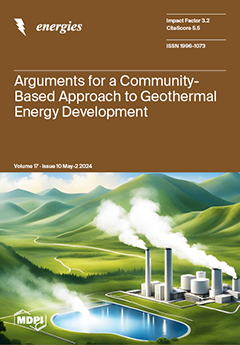This research identifies the productivity of landfill gas actively captured at a municipal waste landfill site with a waste mass exceeding 1 million Mg from sectors in the operational and non-operational phases, considering meteorological conditions. Based on the analysis of landfill gas, including
[...] Read more.
This research identifies the productivity of landfill gas actively captured at a municipal waste landfill site with a waste mass exceeding 1 million Mg from sectors in the operational and non-operational phases, considering meteorological conditions. Based on the analysis of landfill gas, including emissions and composition (CH
4, CO
2, O
2, and other gases), the processes occurring demonstrate the impact of the decomposition of deposited waste on the activity of the deposit. With average monthly gas emissions exceeding 960,000 m
3, the average content of CH
4 (30–63%) and CO
2 (18–42%) and the varied content of O
2 (0.3–9.8%) in individual sectors of the landfill site were significant. The statistically significant relationship between CH
4, CO
2, and landfill gas emissions exhibited a noticeable decrease in methane content. Despite the abandonment of waste storage, a high correlation is present between the emission level and methane content (0.59) and carbon dioxide (0.50). In the operational part of the landfill, this relationship is also statistically significant but to a lesser extent; Spearman’s
R-value was 0.42 for methane and 0.36 for carbon dioxide. The operational and post-operational phases of the municipal waste landfill demonstrated a noticeable impact from the amount of precipitation, relative humidity, and air temperature, on landfill gas productivity. The generally progressive decline in the activity of the waste deposit, which reflects a decreasing trend in the methane content of approximately 2% annually in the total composition of landfill gas, as well as the share below 50%, indicates the need only to utilise landfill without producing energy.
Full article





